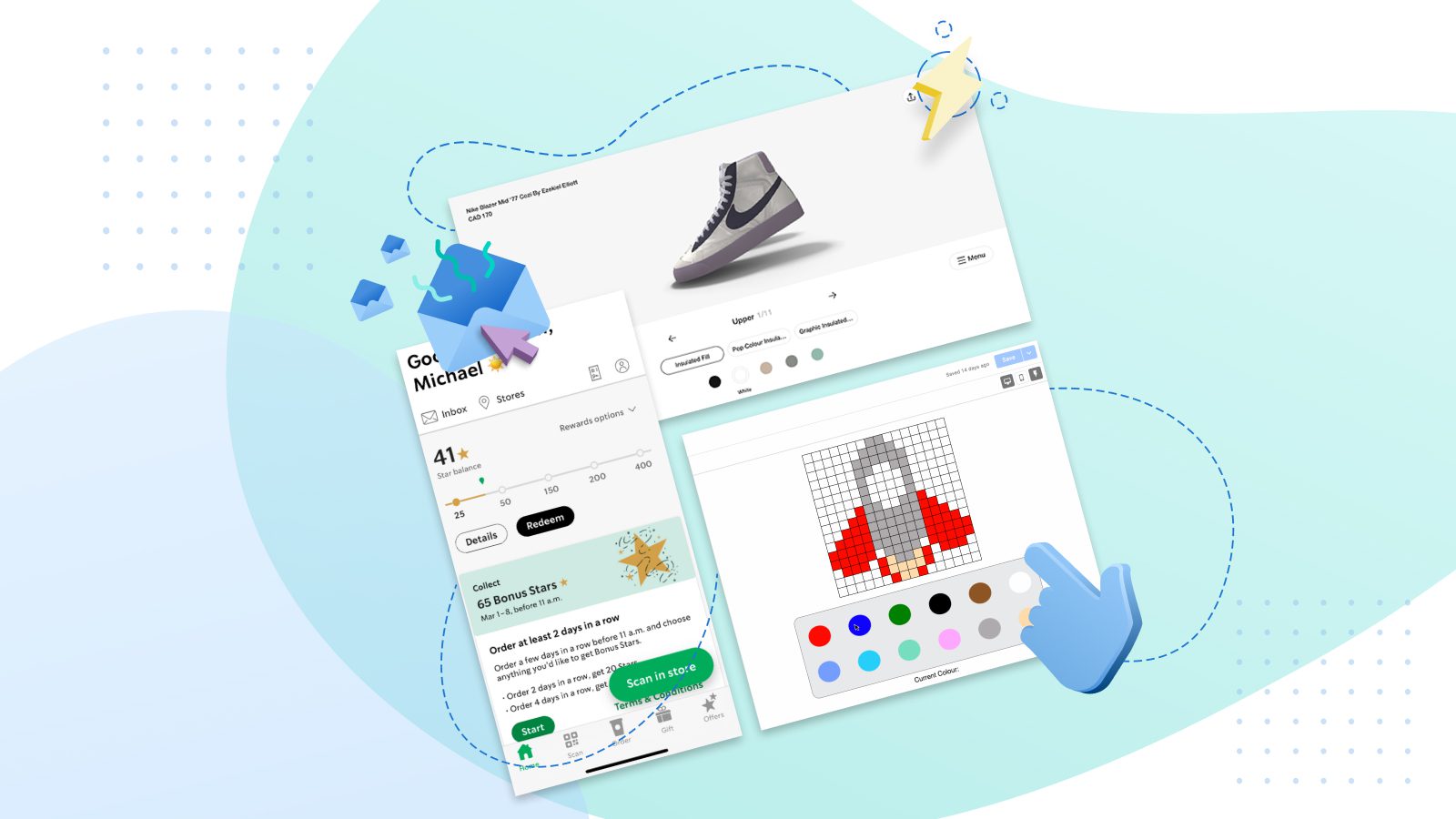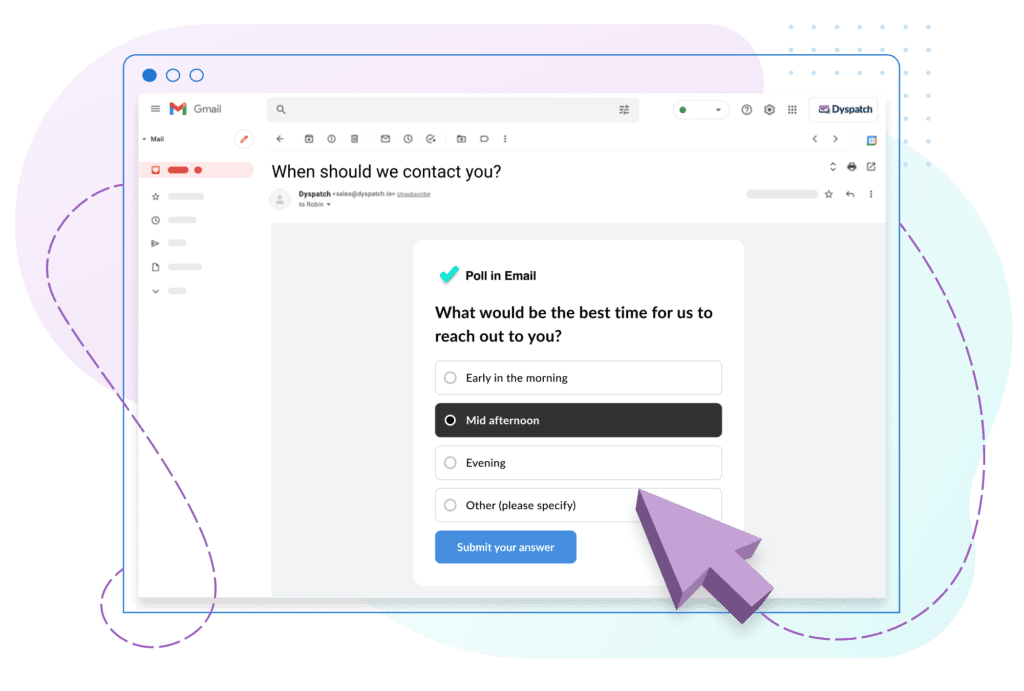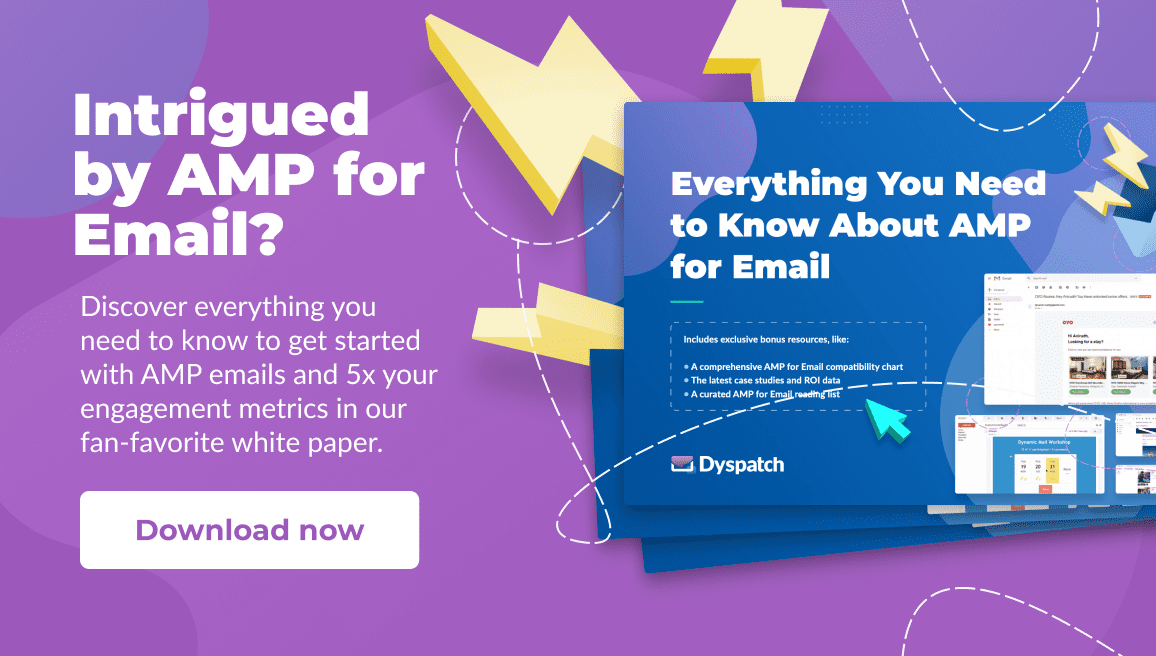I have three words for you: Pizza slot machine. Besides sounding like a gamble I want to take, those three words add up to a lot of revenue, too.
Gamified mobile apps make up 30% of Domino’s sales. Not sure what to order? Shake your phone and the pizza slot machine randomly decides for you.
The key here is fun. Now, thanks to AMP email technology, you can create interactive content like never before, including mini-games inside an email.
But it’s more than having some fun.
Gamification can help you:
- Generate up to three times more revenue from your email marketing.
- Grow your email list size by two-point-five times.
- Increase your conversions by 94% compared to regular content marketing.
And, gamified offers work for all types of companies — from ecommerce to SaaS to fintech and everyone in between.
Wondering what gamification could look like for your business? All will be revealed!
In this article, I’ll show you six examples of gamified AMP email campaigns. Plus, I’ll share even more ideas to use the power of gamification to your advantage. But first, what makes gamification effective, exactly?
The Psychology Behind Gamification: Four Key Concepts of Reveal Marketing
A tactic known as “reveal marketing” is at the heart of gamification’s effectiveness. Reveal marketing involves getting someone to perform an action in order to uncover hidden content, like a coupon or special offer.
But getting your subscribers to perform that action is the key. That’s where AMP for Email comes into play.
What’s AMP for Email, you ask? AMP email components use dynamic, live data that allow you to deliver a tiny website inside an email. Why bother? Because it removes the friction created when subscribers need to click away from their inbox.
Now, your email’s only job becomes getting people to play the game. So let’s talk about how to do that.
Successful gamification email campaigns tap into four key concepts of reveal marketing:
- Curiosity
- Conditioning
- The IKEA effect
- Near miss theory
Below, I explain how each concept motivates your subscribers’ to act, and show you successful gamification examples you can create with AMP for Email.
1. Curiosity
That’s why you’re still reading this, right?
Curiosity stops the scroll and gets subscribers’ interested in your offer.
Curiosity is part of human nature. It’s what drives nearly all our actions, including the desire to learn, understand our environment, explore the galaxy, discover medical breakthroughs, and much more.
It’s the first requirement to satisfy to get someone to take action.
I mean, just think, what if early humans had never thought, “I wonder what would happen if I smashed these two stones together?” 🔥
Being curious was about survival — avoiding predators, discovering edible plants. But today, it’s often about thriving. What skills do I need to learn to land that promotion? How can I get rich in the stock market? What in the world is an NFT?
So how do you inspire curiosity, eventually leading to action, with your email marketing?
Answer: Gamification paired with AMP for Email.
How to Inspire Curiosity with AMP for Email
Many games, or even short quizzes or surveys, are still created on landing pages. To play them, subscribers need to click over from an email. But, with an average email click-through rate of only seven-point-eight percent? Good luck getting a conversion.
With AMP, you can deliver the entire game in an email instead. Subscribers can interact with your email content without leaving their inbox. This increases the likelihood you’ll capture their attention, since they don’t have to take an extra step to see your content.
It’s right there.
They see a preview of your fun game poking up from their inbox and, oh, that looks interesting…
Here’s an example of what’s possible inside an AMP email.
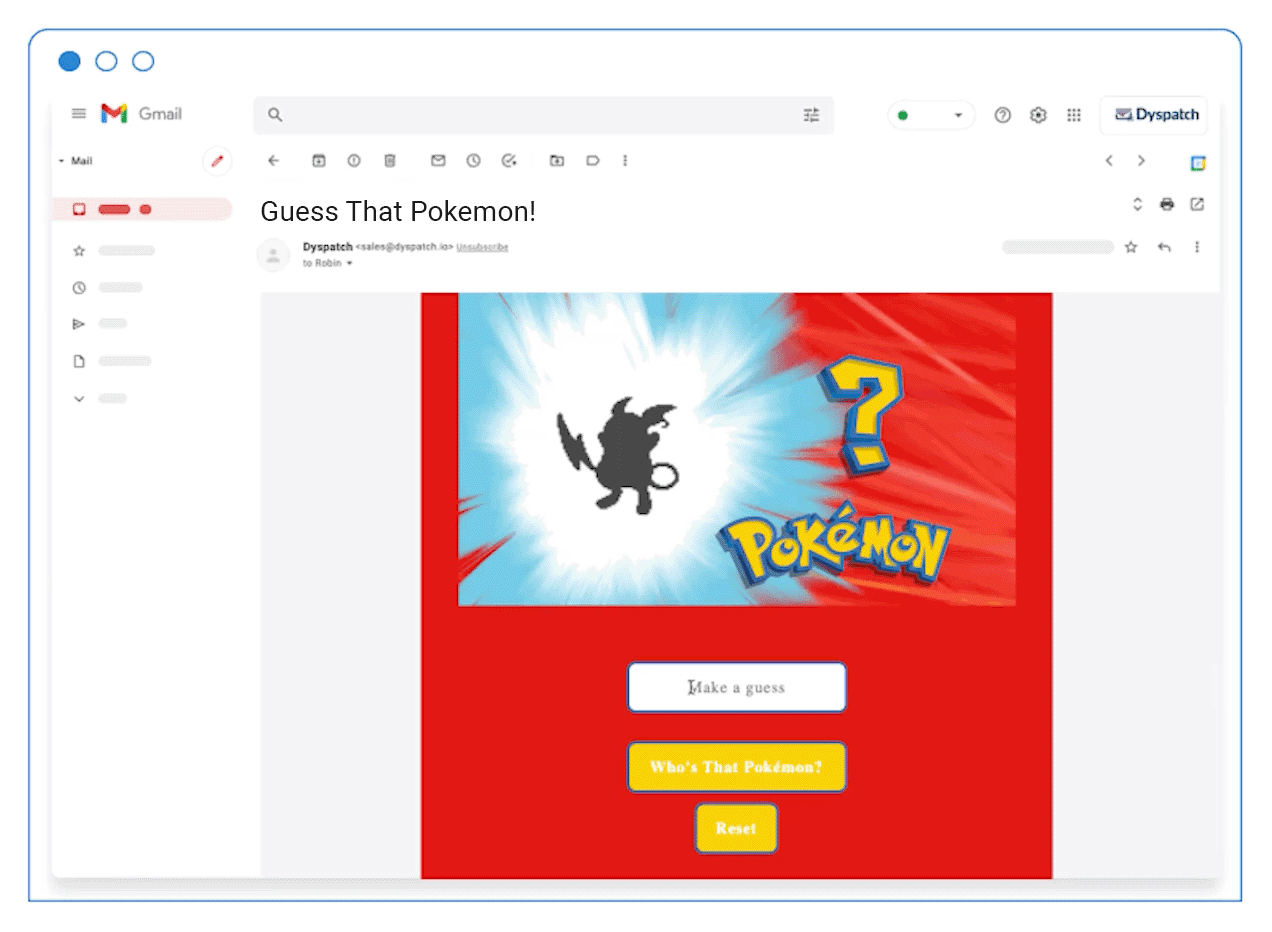 Source: Dyspatch
Source: Dyspatch
Who is that Pokemon? Assuming your audience is knowledgeable about Pokemon, they may think they can tell which one it is.
And that’s why this email game works.
If I didn’t know anything about Pokemon, would I want to know which silhouette is which? Maybe. But if I really like Pokemon, and I’m 85% sure I know which silhouette that is, am I likely to enter an answer to find out if I’m right?
Science says yes.
Human curiosity is driven more by what we already know versus what we don’t. Specifically, our doubts about what we think we know, according to research from the University of California at Berkeley.
Getting people curious enough to play the game is 99% of the battle. Before they know it, they’ve uncovered your “reveal” — a special offer they’re tempted to act on.
2. Conditioning
Let’s play a game of our own, marketer-to-marketer.
What’s the first thing you think of when I say the word “unprecedented?”
Let me guess: All those emails you got in 2020 from companies saying how there for you they were?
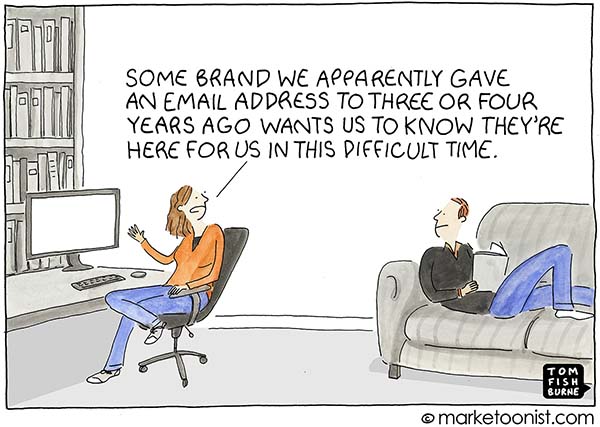 Source: Marketoonist
Source: Marketoonist
This is an example of our second principle of reveal marketing: Conditioning.
Just like Pavlov’s dog in his famous experiments, we’re all now conditioned to associate the word “unprecedented” with marketing emails about the pandemic.
How? Repetition!
Conditioning may sound like a nefarious mind control plot, but it’s simply another way to teach your customers what to expect from you.
You can condition them to expect a fun, new game from you every month.
You can condition them to expect an exclusive discount code, reserved only for email subscribers, every week.
You can condition them to look forward to your emails because they’re going to be interactive, engaging, and save them time, money, or stress.
Whew, those are some big shoes to fill, Pavlov Junior.
Once again, AMP for Email makes conditioning easy.
How to Condition Your Audience with AMP for Email
Ever buy one of those adult coloring books? Satisfying, right?
Now you can recreate that ASMR moment in an AMP email:
![]() Source: Dyspatch
Source: Dyspatch
Sure, coloring books are fun. But you could also use AMP technology to create games where your subscriber selects locations on a map (“Win a trip!”), scratches areas off a lottery ticket, or you could even recreate a classic 90s Minesweeper-type experience.
#RIPWindows95
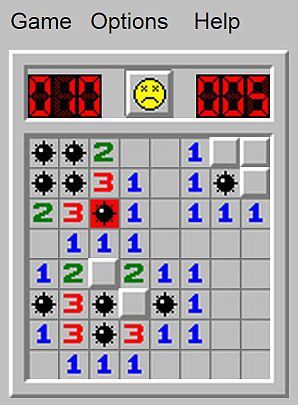 Source: DailyMail
Source: DailyMail
What if you sent out a gamified AMP email every month, or even every quarter, to your subscribers?
Each game you serve up delivers a small dopamine hit. Dopamine is the “feel good” chemical, because it stimulates the brain’s reward system. As a result, it drives motivation.
Over time, those dopamine blasts create an association in your subscribers’ minds. It becomes a neurobiologic response to receiving an email from you: This email is fun, and I’ll get a cool offer at the end.
They may not drool when they hear your name, but well done, Pavlov.
3. The IKEA Effect
Researchers at Harvard Business School coined the term “the IKEA effect” after they discovered people value products more if they’re partially responsible for creating them.
Specifically, it was about putting together the Swedish manufacturer’s furniture. Since you have to assemble it yourself, you’re more satisfied with the end result. (If you managed to get that far without chucking your allen key across the room, that is.)
It’s rooted in psychology with what’s known as “effort justification.” Our human brains want to believe our hard work is accomplishing something. So, we place more value on outcomes we put effort into, regardless of if that outcome is valuable objectively.
In marketing, we use this effect all the time:
- Take-home meal kits from restaurants where you cook the items yourself.
- Build-a-Bear retail stores, where children customize and assemble their own teddy bear.
- Nike’s “Customized By You” program is a particularly powerful e-commerce example: Users can customize up to 11 different parts of their shoes, including color for each section, material, and adding custom text.
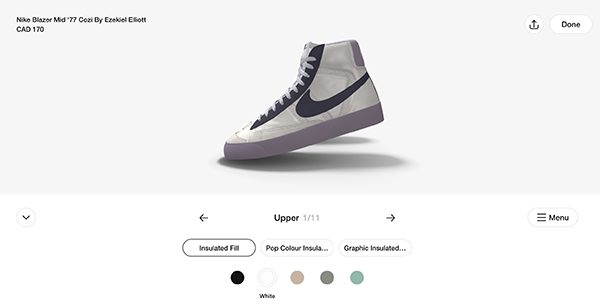 Source: Nike
Source: Nike
Just like with products, the same is true for games.
One of the most famous examples is McDonald’s annual Monopoly promotion. The fast food chain includes game tokens on select items and you collect them to win either big prizes, like cash or cars, or smaller, instant win prizes.
There are also digital codes to track your progress online and earn additional rewards for playing.
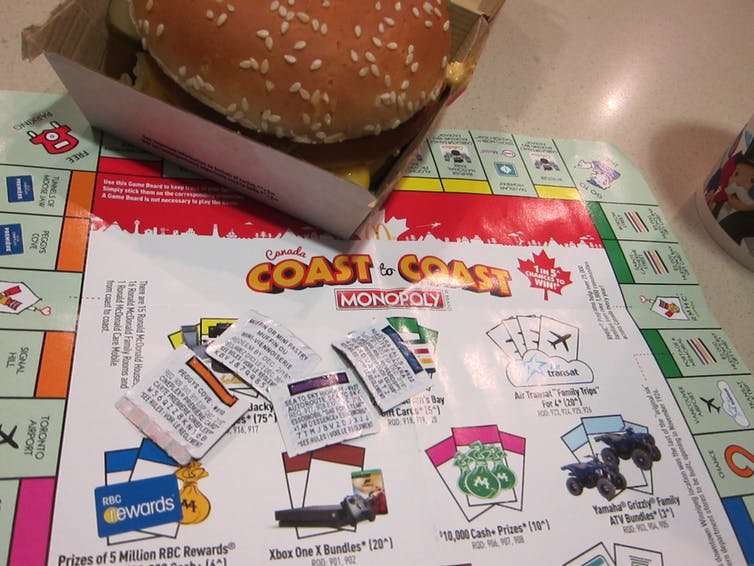 Source: Phys.org
Source: Phys.org
The game is simple: Collect pieces, enter codes, win prizes. (And for me, gain ten pounds.)
But it requires just the right amount of effort: Keeping track of which pieces you need for “the big prize” you want, entering digital codes on their website, and remembering to stop in a little more often to get more game pieces.
Because of the effort we put in, we don’t even care what our chances are. One statistician measured the odds of winning the top prize in Canada for Monopoly as one in 16,066,918.
But it doesn’t matter — thanks to the IKEA effect and the principles of gamification, we value winning a $20 gift card higher than its financial value, even if we had to put in hours of work collecting game pieces to get it.
How to Use the IKEA Effect with AMP for Email
Your email should be simple to understand and have a small task for your subscriber.
Here’s an example of a memory game you could create with AMP for Email. Remember — this all happens right in your subscribers’ inbox, so they can open it and play right away.
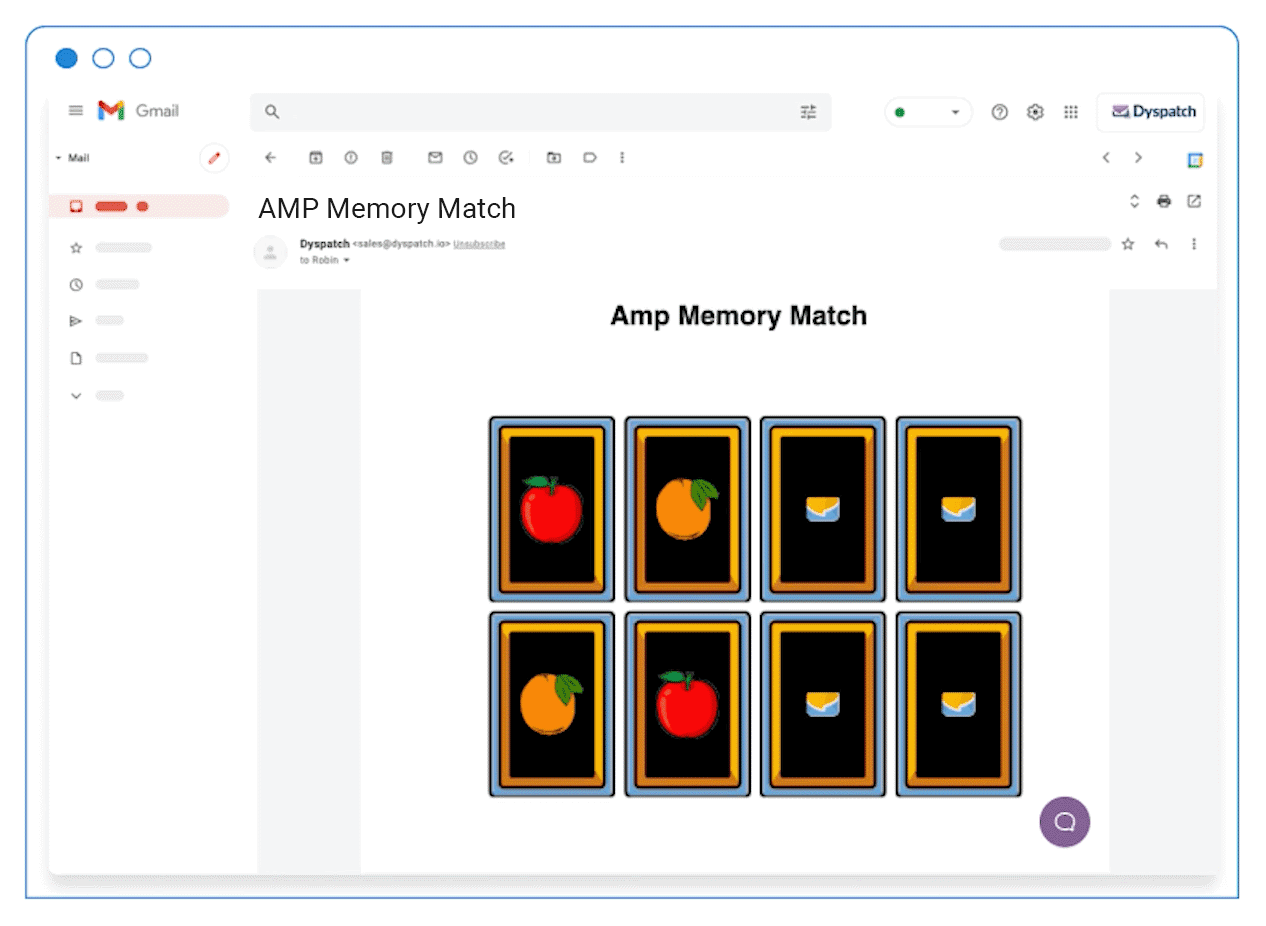 Source: Dyspatch
Source: Dyspatch
Here’s the key to using the IKEA effect: The task you want your customer to do has to be achievable. It doesn’t have to be super easy, but you don’t want to make it so difficult that they give up and don’t buy or feel frustrated.
In this example, they have to match two cards in order to reveal the discount code. It may take them a few tries to get it, but it’s clearly achievable in a short period of time.
For an even simpler task, you could offer a virtual scratch ticket, like this example from Bose. Yours could include multiple scratch areas where users need to match symbols to win a larger prize. And even if they don’t win big, they still get a discount code.
Or just keep it super easy with one scratch area.
 Source: Really Good Emails
Source: Really Good Emails
Research proves even that tiny amount of work will make your customer more likely to use your discount code — versus sending a regular email with one they didn’t have to work for.
4. Near Miss Theory
You know when you’re playing a slot machine and you almost get the big win or the bonus round?
Or, like in McDonald’s Monopoly mentioned earlier, you’re only one token shy of collecting a cool $50,000?
That’s what’s known as “near miss theory.” You lose a game by such a small amount — one number, one letter — that you feel like you could win if you kept playing.
Interestingly, studies show it doesn’t matter if it’s a game of skill or chance. With a skill, such as shooting, missing the target makes us think we know how to improve our next shot, so we feel closer to winning. In a game of chance, we think the odds may be in our favor next time, so we better try another round.
It’s one of the key tactics casinos rely on to keep you coming back. The same logic works for your emails, too.
How to Apply the Near Miss Theory with AMP for Email
In this “Hangman-style” guessing game below, the shark advances toward you for each wrong guess. Near the end, you’re one mistake away from being chomped, but luckily your last guess is correct.
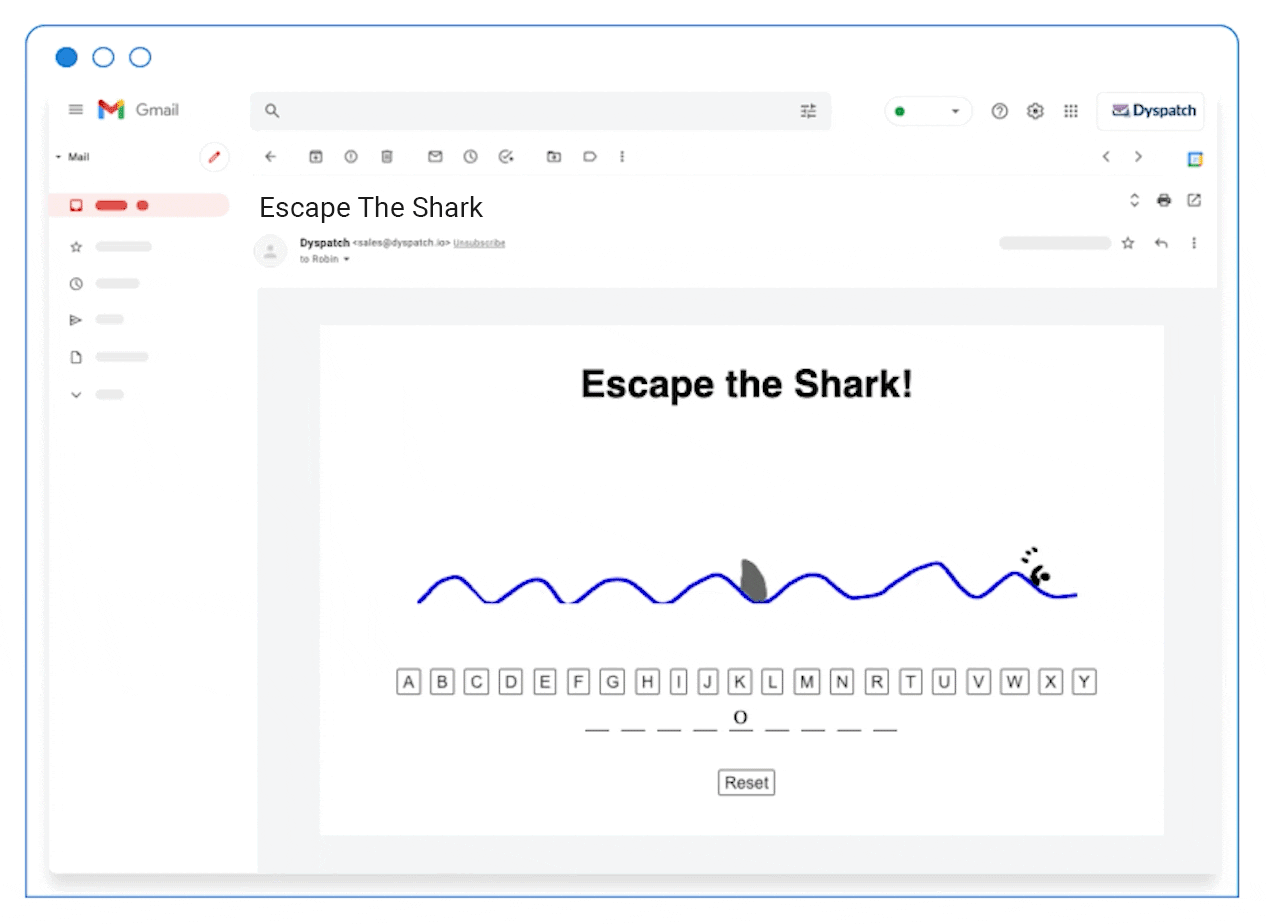 Source: Dyspatch
Source: Dyspatch
Victory! (Sorry, Sharknado.)
Any game that builds suspense through the idea of “almost winning” taps into the near miss theory. Like this one, where the player makes a choice, or a game of chance where four out of five numbers line up, or you’re 10 points away from the bonus round — you get the idea.
Create Loyal Superfans with Gamified AMP Emails
What happens when you combine psychology with fun?
Gamification.
Offering interactive, unique gamified experiences means your subscribers will always look forward to hearing from you in their inbox.
Gamified emails created with AMP for Email technology capture attention from the second your subscriber sees them. They don’t even have to make a decision. They can start playing the game immediately and receive their reward.
And AMP email gamification is for everyone.
Ecommerce clothing company Moosejaw earned a 560% ROI on their gamification campaign and snack food Popchips increased sales by 40% thanks to gamified coupon codes.
Fintech is another industry with tons of gamification opportunities, like Neo’s Mastercard, which gives out higher cashback percentages the more you use your card. Imagine sending out a scratch card game via email with a personalized cashback offer — that’s double gamification at work.
And the bigger you are, the more you gain. Starbucks gamified their mobile rewards app to include earning “stars” for each visit. Plus, you get bonus stars for completing specific actions — delivered in-app and via email as personalized offers.
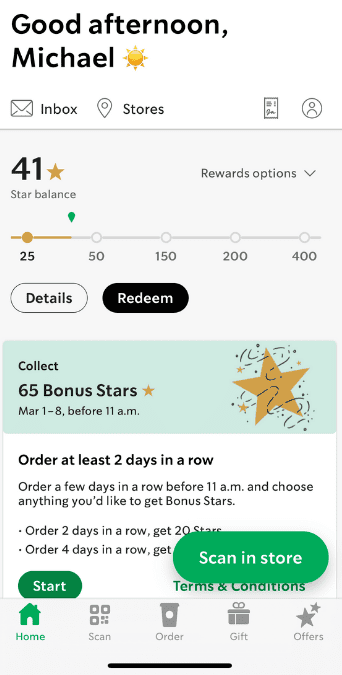 Source: UX Collective
Source: UX Collective
By personalizing their offers, Starbucks earned three times the revenue per offer than their previous offer system. When you bring in over six billion dollars per year, that’s an incredible result.
The great news is you can copy that success with AMP for Email gamified offers.
Learn more about how AMP for Email works, then sit down and start brainstorming your AMP email game. You bring the idea, and we’ll make it happen!
